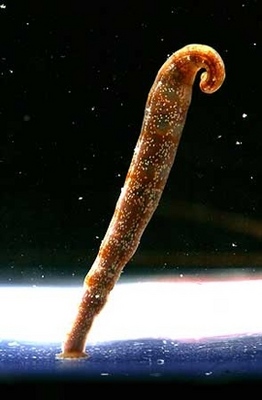
|
| ©Unknown |
| Arctic leech |
Call it the invasion of the marine bloodsuckers. As conditions in Antarctica continue to heat up, new species of leeches, which are known vectors for viruses and bacteria, have slowly begun infiltrating the frigid waters -- putting many commercially valuable fish species at risk.
Juergen Kolb, a researcher based at the Massey Institute of Natural Resources in Auckland, believes these invasive leeches pose a dire threat and that, given time, they could wipe out entire populations. He is one of the few biologists interested in studying the life history and ecological importance of leeches, which he thinks could provide an early warning sign of the impact of climate change on marine organisms.
Leeches well-adapted to handle climate change
It is very likely that leeches would be able to survive any climate change-induced temperature increase that might otherwise harm other cold water species in Antarctica, Kolb says. During an earlier trip to the Arctic region, Kolb found evidence to support his view that leeches were expanding their range and thriving, often at the expense of other vulnerable fish species.
He plans on collecting as many leech species as he can find during his next Antarctic expedition; his goal is to study the leeches' genomes to determine how closely related they are to other leech species found in the Arctic and other warmer, freshwater regions.
"The situation is potentially quite dangerous. If conditions become warmer, we'll get new types of pathogens being transmitted into fish. Not only can this cause harm or death of individual fish but lead to the collapse of entire fish populations. Eventually this could threaten commercial fishing industries and the food sources that humans depend on," Kolb explains.



Reader Comments
to our Newsletter